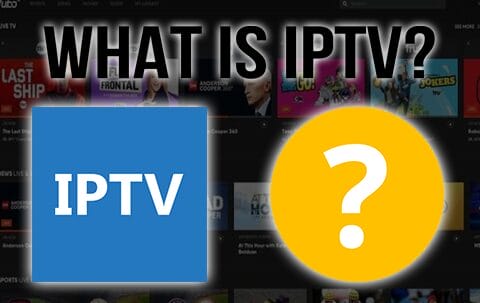Past Cable: The Way IPTV will be Shaping the Next Generation of Television Consumption

In a world where tech is evolving at lightning speed, our viewing habits are undergoing a change that is impossible to ignore. premiumiptvpro are the days when traditional cable reigned supreme, tying viewers to inflexible schedules and narrow choices. Today, the rise of IPTV is shaping a new landscape for how we consume entertainment, and it is swiftly becoming clear that this groundbreaking approach is the future of TV.
Internet Protocol Television, or IPTV, offers a extent of flexibility and ease that traditional cable cannot match. With the ability to stream content directly over the web, viewers can access an wide library of channels and immediate shows from practically anywhere. This shift not only enables audiences to watch what they want, when they want, but also creates opportunities for new content creators and varied programming that reflects a global culture. As we dive deeper into this phenomenon, it becomes evident that IPTV is not just a trend; it is reshaping our perceptions of what television can be.
Comprehending Internet Protocol Television
Internet Protocol Television, also known as IPTV, is a system that transmits television content using the internet rather than classic cable or satellite formats. Thus, this method streams live content and on-demand programming directly to viewers' devices via an internet connection. In contrast to standard television options, which rely on satellite connections or cable systems, IPTV transforms live and pre-recorded footage into packetized data and streams them over the online. Consequently, this facilitates users to reach a wide variety of TV channels and content without the limits of bulky equipment or tangible formats.
A significant aspect of IPTV is its adaptability. Users can watch their favorite programs on a diverse set of platforms, including smart televisions, smartphones, portable devices, and laptops. This multi-device support provides increased ease, allowing customers to utilize content anytime and anywhere with a consistent internet access. Furthermore, many IPTV providers frequently feature interactive features, such as video on demand, catch-up TV, and the ability to stop and replay live shows, enhancing the viewing quality.
The rise of IPTV corresponds with the movement in consumer behavior towards digital streaming platforms and the intake of digital content. As viewers increasingly electing for on-demand access and customized programming, IPTV services are changing by supplying customizable packages and a extensive catalog of content and media. Such a shift does not only fulfills the dynamic demands of audiences but also establishes IPTV as a viable and strong substitute to traditional television services in the current entertainment industry.
Advantages of IPTV compared to Conventional Cable Services
IPTV delivers enhanced flexibility compared to conventional cable. With Internet Protocol Television, audiences have the ability to watch media on different platforms such as mobile phones, portable devices, smart TVs, and computers. This allows for a much personalized experience in watching as users may access their preferred content anytime and in any location, differing from traditional cable, which is often bound by a particular location and devices. This flexibility is important in a fast-paced world in which comfort and mobility are greatly appreciated by audiences.
Furthermore major plus of Internet Protocol Television is its capability to deliver a broader variety of media customized to individual tastes. Unlike regular cable services that bundle content, Internet Protocol Television offerings often allow customers to select particular programs or pay-per-view content tailored to their likes. This menu-style approach not only accommodates varied viewing habits but can result in saving money, as viewers solely pay for what they actually watch, instead of paying for extensive bundles that feature unwanted channels.
Moreover, IPTV typically provides improved functionalities that enhance the complete user experience. Many IPTV providers provide functionalities such as on-demand viewing, time-shifted TV, and cloud DVR options. These functionalities allow viewers to pause, capture, and watch again their preferred content at their convenience, something that can be highly desirable when compared to the basic features of standard cable services. This seamless integration of modern technology positions IPTV as the the better attractive choice for contemporary audiences seeking an enriched viewing experience.
The Destiny of IPTV and TV Viewing
This prospect of IPTV is set to change the way we watch television content, making it more reachable and tailored than at any time previously. With internet connections improve and technology continues to develop, viewers will have the opportunity to enjoy HD and including UHD materials free from the constraints of conventional cable. IPTV delivers a level of freedom that allows users to view shows and movies on a variety of platforms, whether in their homes or while traveling, addressing the demands of contemporary lifestyles.
Moreover, the combination of artificial intelligence and machine learning within IPTV platforms promises to improve user experience significantly. By analyzing watching patterns, IPTV services can deliver tailored recommendations, resulting in a better involving and pertinent program experience for each viewer. This personalized approach not only keeps audiences entertained but also fosters stronger connections with content, transforming the paradigm from inactive watching to engaged involvement in their entertainment options.
While IPTV continues to develop, it is expected to take a crucial role in the upcoming of interactive and community television experiences. Features such as live chat, real-time interactions during broadcasts, and the ability to distribute programs with contacts across social media are already on the horizon. This development signifies a transition towards a greater community-oriented approach to TV viewing, converging with the cooperative and engaging nature of the current digital world.

